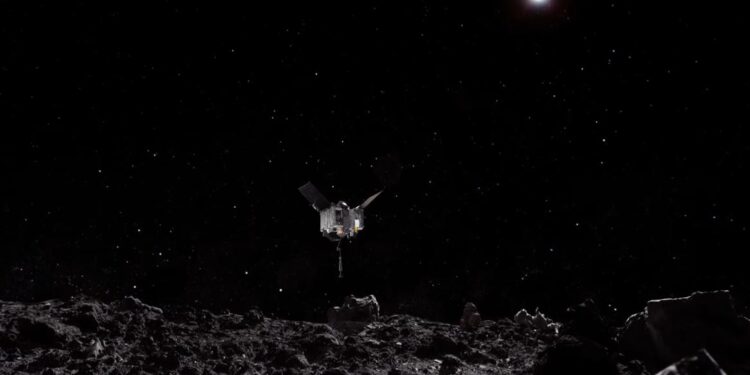The OSIRIS-REx spacecraft will reach the Bennu asteroid to take a rock sample and send it back to earth during one of the most daring missions in history
On Tuesday, October 20, 2020, NASA will conduct one of the riskiest missions ever planned in the 62 years of its existence. The OSIRIS-REx spacecraft will approach an asteroid and attempt a descent to its surface. OSIRIS-REx will then attempt to extract a rock sample of about 2 kg, along with dust and debris, to send everything back to earth. The “kiss” is scheduled at 22:12 UTC and you will be able to follow the evolution of the mission thanks to the live broadcast on NASA’s site. The agency will stream an animation that will simulate the operations of the spacecraft, together with a scientific commentary, starting one hour before the scheduled contact.
But why go so far? The asteroid object of the mission is called Bennu, has a diameter of about 600 meters and is as high as the Empre State Building. Discovered for the first time in 1999, the body takes 1.2 years to orbit around the sun and, every now and then, the Earth intercepts its wake that generates the phenomenon of shooting stars in late September. Its trajectory is therefore on the same plane as the Earth, which makes Bennu a potential danger for our planet. Scientists have calculated that in 2170 there will be one chance in 2700 to be hit by Bennu, low but still existing.
NASA’s intention is to collect material from the asteroid to study and fully understand its nature. A greater knowledge of its composition will allow to effectively counteract the possible future danger. Moreover, experts believe that Bennu comes from a very distant part of the universe. Its birth could therefore have occurred in planetary systems completely different from ours. Knowing Bennu’s composition will make us understand the composition of the universe in its first moments of life. NASA will also go in search of organic molecules to try to explain where life comes from and how it was formed on Earth.
You may also be interested in -> Gryphon Tech will develop a new nuclear engine for NASA

































